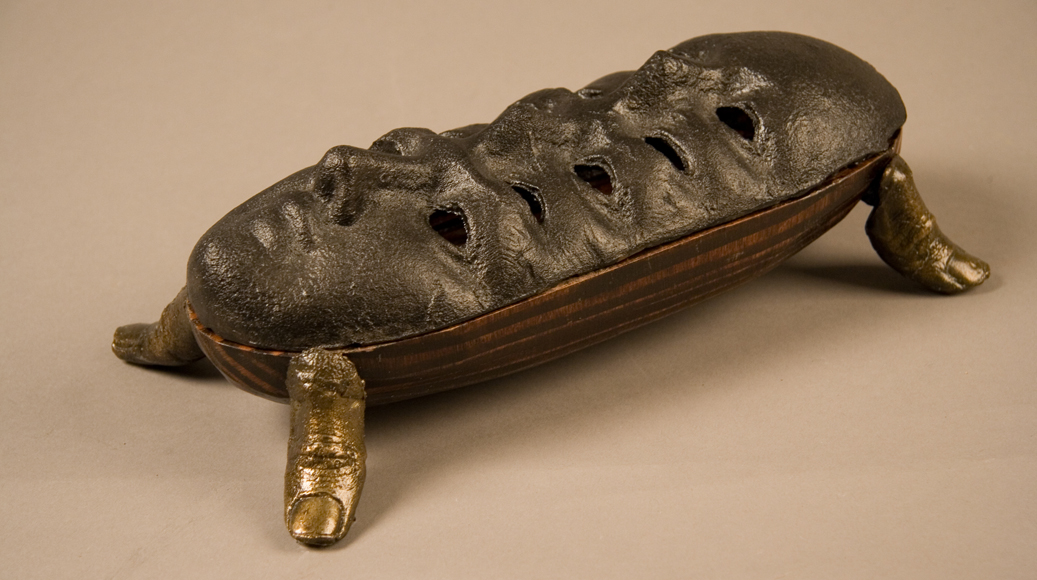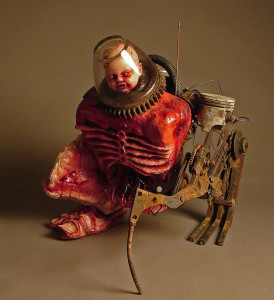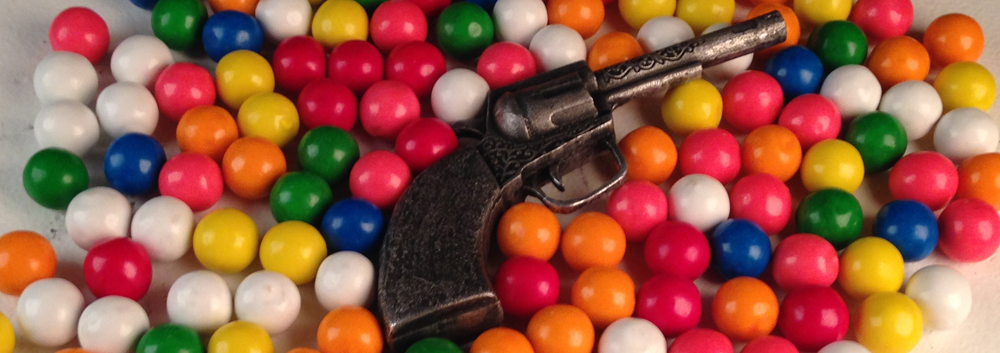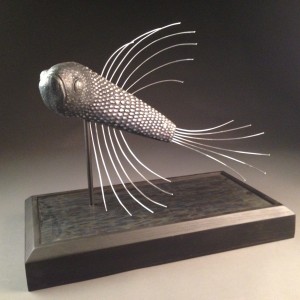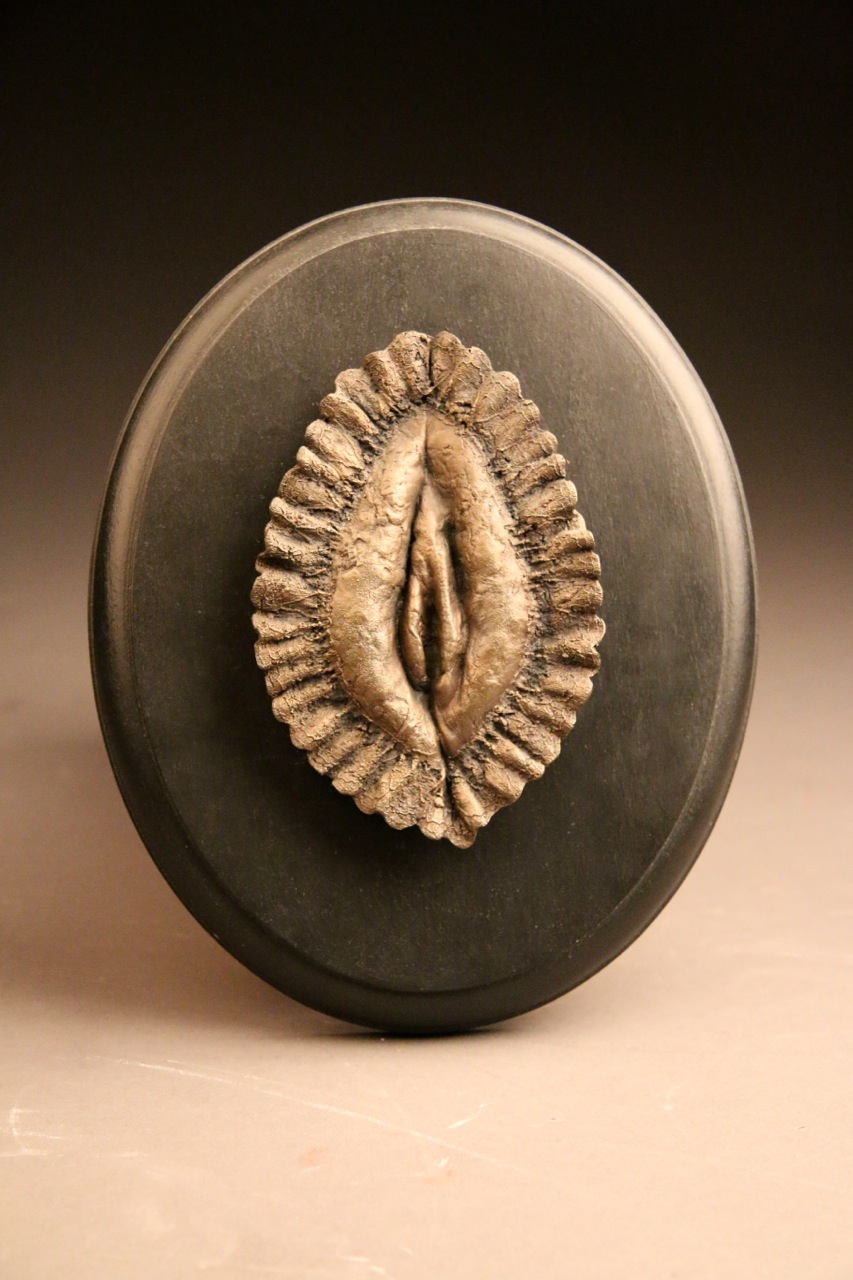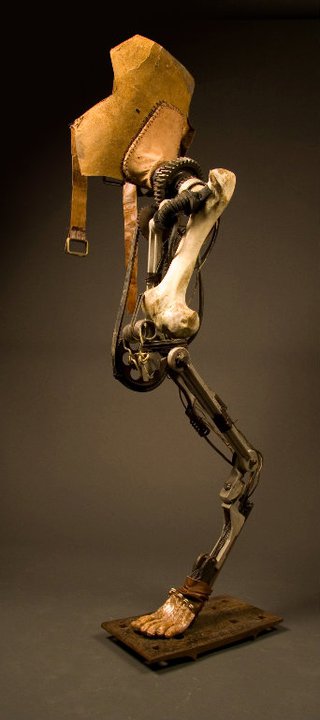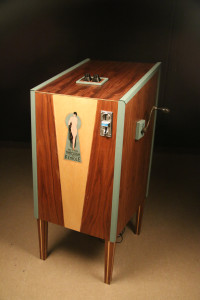 A class of this level is a junior/senior level experience in sculpture. As such the student is responsible for developing and presenting a digital file and printed statement of their intentions for the rest of the semester. It should include a theme description, images of other artist’s works that are similar thematically, the materials and techniques believed appropriate for this theme. Personal deadlines are valuable assets for individual growth and will allow one to self check progress and stay on schedule to deadline. Develop this in the proposal to assist in staying on task. The instructor will consider the proposal and, if need be, ask the student to make adjustments that strengthen their ideas/concepts or stretch their creative reach.
A class of this level is a junior/senior level experience in sculpture. As such the student is responsible for developing and presenting a digital file and printed statement of their intentions for the rest of the semester. It should include a theme description, images of other artist’s works that are similar thematically, the materials and techniques believed appropriate for this theme. Personal deadlines are valuable assets for individual growth and will allow one to self check progress and stay on schedule to deadline. Develop this in the proposal to assist in staying on task. The instructor will consider the proposal and, if need be, ask the student to make adjustments that strengthen their ideas/concepts or stretch their creative reach.
Below is a brief outline of format and what is expected in the proposal. It is anticipated that the proposal be presented in a format of professionalism that expresses this advanced level course. Three to five pages is an average goal for this assignment.
Project Assignments:
- Research Proposal: Statement of Intent: Due Date by instructor mandate
- Minimum of 2 sculptural compositions: See syllabus for scheduling
- Artist Statement for each composition (Focus on the individual composition)
- Documentation: Photo images of finished pieces
- Sketchbook: Research for each composition (5 page minimum per composition)
- More information on these topics below.
Research Proposal: Statement of Intent
- Cover sheet:
- Title: “Course Proposal: Sculpture “Course Number”
- Prepared for: Instructor’s name, Advanced Sculpture (Semester and year)
- Prepared by: “Student Name”
- Date
Proposal Summary: One to two page
- Objectives
- Goals
- Research
- Personal Deadlines
- Additional images and documents to add to your proposal (See below)
- Notes on imagery:
• Artist research: Articles and Artists Statements
• Images may be printed within the body text
• Images may be printed on pages after the body text. Try to note these in your body text.
• Your Sketch book or a copy: Sketches and ideas of your intentions
- Notes on imagery:
Presentation:
A presentation to the class will be expected on the due date of this statement. Be prepared with your statement of intent, drawings, rough sketches, lists, images and other information gathered for your research. This will be treated as a critique session in which student engagement, ideas and feedback will be expected during the discussion. Digital format should be the goal for this assignment. Please submit via email, yet a portable storage device may be used to transfer files to the instructor.
Media Presentation: (optional)
A Power Point/Keynote presentations may be delivered to the instructor and your peers in group critique. This type of presentation should set the bar for your peers. Please give a copy of your presentation to the instructor, and remember to have a digital copy in your final documentation for the course.
Minimum of 2 sculptural compositions required:
Unless the work you plan to create is very large in scale or requires extensive processes to create, you will be expected to produce no less than two compositions for the remainder of the semester. The instructor will consider your course proposal and, if need be, ask you to make amendments that will strengthen your ideas, concepts or stretch your creative reach. If there is no production or production is deemed very low at Week 12 the grade for this course will be greatly compromised.
See syllabus for due dates of individual projects:
Photograph your work as you finish or revise. This will gain focus and some flexibility if documentation requires editing later on.
Individual Artist Statement for each composition:
A one-page artist statement of two to three paragraphs, three to five sentences each, should be the goal for each sculpture created this semester. Printed/Duplicated statements should be presented at the beginning of the critique session or one class session after the critique of the composition to gain full credit. Initially the student should research artist statements. Develop these statements as an individual statement about each individual piece. They should not read the same. Do not reference the other works in the series. Envision the piece as it may be going to an exhibition without the other work. Speak about the work and not your personal experience and processes that have little to do with the viewers understanding of the finished product. Use the responses you get during critiques to further develop writing and interpretations of the work.
Initially, one should research artist statements and art reviews in publications. Drawing from this research will no doubt provide a solid direction in understanding the variety of individual artist statements and in developing authentic statements. There are many opportunities to examine the variety of artist statements. Solo and group exhibitions usually host artist statements within the show. These are good examples as they usually inform the viewer of what “ties” the work together. Which is what you are trying to do for this course. Artist websites may also have statements linked to them. There are many “How to do’s” as well; books, publications and websites. An internet search for “writing artists statements” will no doubt bring you many bounces to work from.
You’ll find many examples of artists statements and many differences in styles. My preference is to see that you can step away from the work and observe it as the critique/viewer. You’ll here me say strip it down, get rid of “I”s and “Me”s. Challenge yourself to make the statement personal, yet do it with a vocabulary that is of a professional level.These exercises will strengthen your writing skills and build your vocabulary.
Writing an artist statement should be much longer than a 30 minute exercise. Content and format should be well investigated. Spelling and grammatical errors will count. (There are too many word processing tools that can assist you in this area.) Proof read and have some one else proof read for you before your final draft. Your final draft should be a printed format and a digital format in a Word Doc. (No Rich Text Formats, “.rtf”)
“Develop a language that addresses the truth that can be found in the work.”
Artist Statement Criteria:
- Header Top of Page:
- “Artist Statement” (Helvetica, Bold 13 pt)
- Title of piece or title of statement, (Helvetica, Bold 13 pt)
- Your name, (Helvetica, Bold 12 pt)
- Course , semester and year: “Art 3710_Fall 2015” (Helvetica, Bold 12 pt)
- Your font choice should be in accord with your portfolio font choice
- Body:
- Write a minimum of Two Paragraphs on the subject.
- Below is a list of topics to contemplate for your statement
- Concept: What ideas are being communicated through the work?
- Does the process add to the concept? How?
- Do the materials add to the concept? How?
- What design elements add to the concept/aesthetic. How?
- What principles add to the concept/aesthetic? How?
- Does content or context add towards the interpretation of the piece? How?
- Does performance or audience interaction contribute to the idea? What and how?
- Edit: Focus: Narrow the statement down to what makes sense. Delete superfluous information.
Artist Statement /Writing Style/ Presentation:
There are many ways to write an artist statement just as there are many ways to develop an artistic composition. Below are some strategies that will help and challenge your abilities to express in words the concepts of the work you develop.
Suggestions:
Step away from the work. Speak directly about what the work exposes to its audience. Try to look at the work and define what you see. Some times the simplest observation carries a bulk of content. What are solid truths that the viewer can gather from the work? What are obvious connections that allow the viewer to understand or interpret the work?
Write with conviction and truth. If its not there it will not make sense.
Separate your identity from what you see. Develop your statement without the use of self declarative statements. Keep them at a minimum if they are necessary. Try not to use I, me, and my statements. This challenge will assist you in stepping away from the work, strengthening your analysis and statements of the work, not to mention develop your vocabulary.
- Try not to be redundant in your statements.
- Try not to use the same word over and over again. Use a thesauruses.
- Try not to sound or come off as defensive.
- Stay away from run-on sentences. Use periods for pauses, speak in complete thoughts, use fewer commas.
- Develop grammar strategies.
- Use proper tenses.
- Have some one proofread and critique your statements.
Documentation: Due at Final Critique, Week 15
Your final will be in the format of a “Professional Portfolio”: (Digital format and a binder/folder)
- Research Proposal:
- Portfolio images: Digital Images of your work (Portfolio Ready)
- Image inventory Sheet
- Artist Statements (3 revised statements)
- Sketchbook: Research for each composition (5 page minimum per composition)
Due on final exam day of this courses, the student will be required to present “Documentation” of their individual research in digital format. Documentation should be turned in no later than the day of final critique for this project assignment. Below is a brief outline of format and what is expected in your documentation. A document and file naming system should be utilized to organize the materials submitted for review. These files will be useful for your professional career. Store them for future updates, maintenance and edits.
Research Proposal: A copy of your original proposal
Portfolio images / Digital Photographs:
Images should be in digital format. Jpegs at 300dpi (5x7in) or larger are preferred. If you need assistance please ask the instructor. A CD/DVD of images is preferred, yet a copy from an external storage device will be accepted. Develop a file naming system to organize your images. Do not embed portfolio images in word files.
Photographing your work is an important step for your portfolio and professional development. As you begin to show your work professionally, you’ll find that the images of your work are usually the only link between you and the venue you are attempting to enter. It is critical that these images show your work in the best light possible. Ample time should be devoted to setting up, staging and photographing the work.
Strategies to consider:
- Research: There are many examples of good photography of 3-D work and many “How to do”s as well.
- Neutral back grounds work well, eliminate clutter. I suggest a grey screen.
- Lighting: Light forms well, yet eliminate as many distracting shadows and highlights as possible.
- Composition: (Your Best Side), The side of the work that shows off your work.
- It is 3-D, there is more than one side…
- Composition: (In the Frame) Remember to compose in the frame of the camera.
- What composition is the best translation of your work from 3-D to 2-D.
- Remember the image is about the work, Your piece should be the center of the photo image.
- Think positive and negative space as you crop into the work. These make for exciting compositions.
- Detail shots: A detail shot can sometimes make the difference. Highlight your work by cropping into successful areas of your work, perhaps an area that shows off your craftsmanship or a dramatic composition. Two to three of your best detail shots can be added to your main image submission.
- Alternative Compositions for presentations: If you see that you will be using the images in a presentation that includes text or alternative compositions develop a strategy. Create images that will make these compositions stronger.
- Take more images than you think you need.
Artist Statement:
- One revised artist statement for each required composition.
Sketchbook: Research for each composition:
A sketchbook is required for this course. A sketchbook allows the student to explore an idea in more depth. Spring boarding from an original idea, the sketchbook usually assist in creating a series of new ideas which can be central for this course level and future endeavors in art making. Planning, sketching, and drawing will allow the student to become acquainted with an inventory of materials and processes that will have to be gathered before executing a project. Further, it will give the student the opportunity to explore ideas without exhausting time and materials on an idea that may fall short of success due to material, facility, or time restraints. It is suggested that a hardbound sketchbook be purchased for this class.
Your Sketchbook should include a minimum of five pages of research for each project. Your sketchbook should include: Sketches of your ideas, copies of article on artist, artworks and topics that inspire your work. Your Sketch book will be evaluated during critiques and due to the instructor along with Final Documentation.
Strategies to Consider: Below are some strategies to consider in developing the portfolio.
Asset Management: Organization and File Naming Systems:
Organization is crucial in developing a professional practice as an artist or art business. Keeping your art work maintained and ready for exhibit is one thing but the other end is having materials ready to submit to exhibitions. Juried exhibitions usually have individual criteria for image naming systems and the information they require for entries. Solo exhibitions will expect more information. Graduate programs expect a mixture of the the two. Then as one may move further, say looking for teaching positions at a college or university, The process is expanded further for the need of teaching materials and student work examples. Not an easy task, but planning in the forefront will assist one greatly in work ahead. This is where organizing and file naming systems work to your advantage. Below are some examples.
Naming “Document Files” such as your CV and Artist statements:
This is an example of how I handle this.
In a folder named “00_Portfolio_Marquez_David”. I develop a numbering and naming system that works well for most of the applications I will be working with. Start with the thing you want the potential viewer to read. Say your Cover letter if its a job. I have several generic files that I work with, one for each application. Then I move on from there with the CV and Artist Statements etc. I add dates to these. So I have back ups of files and am able look back and see my development. I keep the old files in a archive folder. These files are updated more than annually, as I create new work, and new ideas develop. See example below:
000_Marquez_CL_010212
001_Marquez_CV_010212
002_Marquez_AS_120211
003_Marquez_SlideList_010212
004_Marquez_ImageFolder
The ”Image Folder” contains image files. The naming structures work along the same lines, but just to keep things in order, I have different folders of images, One that is my main pool of images, raw files untouched and un-edited, one that is my juried exhibition ready images, and a portfolio folder of 20 images that I send off to solo exhibition request. This may include a title, a year of production and something to distinguish it as a detail image. See below:
001_Marquez_VOW_2008
002_Marquez_Fetish_2009
002_Marquez_Fetish_2009_Detail
003_Marquez_Vessel01_2010
004_Marquez_Vessel02_2010
005_Marquez_Vessel03_2010
005_Marquez_Vessel03_2010_Detail
This system changes for different applications. A spread sheet may be used to keep other information that is required for exhibitions. A “Slide List” is used for most exhibition entries. Both contain information such as the size/scale of the objects (HxWxD), materials used and a sale price. Make an effort to keep this information handy.
Example : Spread Sheet with information.
Portfolio Presentation:
On the Final Exam Day of this course, a brief slide presentation of your portfolio to the class may be expected. The instructor will schedule presentations if time allows. Please submit your images to the instructor two weeks before finals week, so that the presentation can be organized. Digital format will be the goal for this assignment. Presentations will be delivered to the instructor and your peers in a group critique. This will be treated as a critique session in which student engagement, ideas and feedback will be expected during the discussion.
READING FOR PROFESSIONAL ARTIST:
Below is a beginning list of publications that are expected reading for professional artist. These readings offer mush in the exploration and comprehension of alternative approaches to studio, concept, and the business of the arts.
- Art and Fear: Observations on the Perils (and Rewards) of Art-making:
- Sculpture in the Age of Doubt: Thomas McEvilley McEvilley
- The Re-enchantment of Art: Suzi Gablik
- Has Modernism Failed? Suzi Gablik
- Conversations Before the End of Time Suzi Gablik
- Beauty is Nowhere: Ethical Issues in Art and Design (Critical Voices in Art, Theory and Culture)
- ArtSpeak: A Guide to Contemporary Ideas, Movements, and Buzzwords, 1945 to the Present: Robert Atkins
- About Looking: John Berger
- Passages in Modern Sculpture: Rosalind E. Krauss
- Art and Visual Perception: A Psychology of the Creative Eye:


